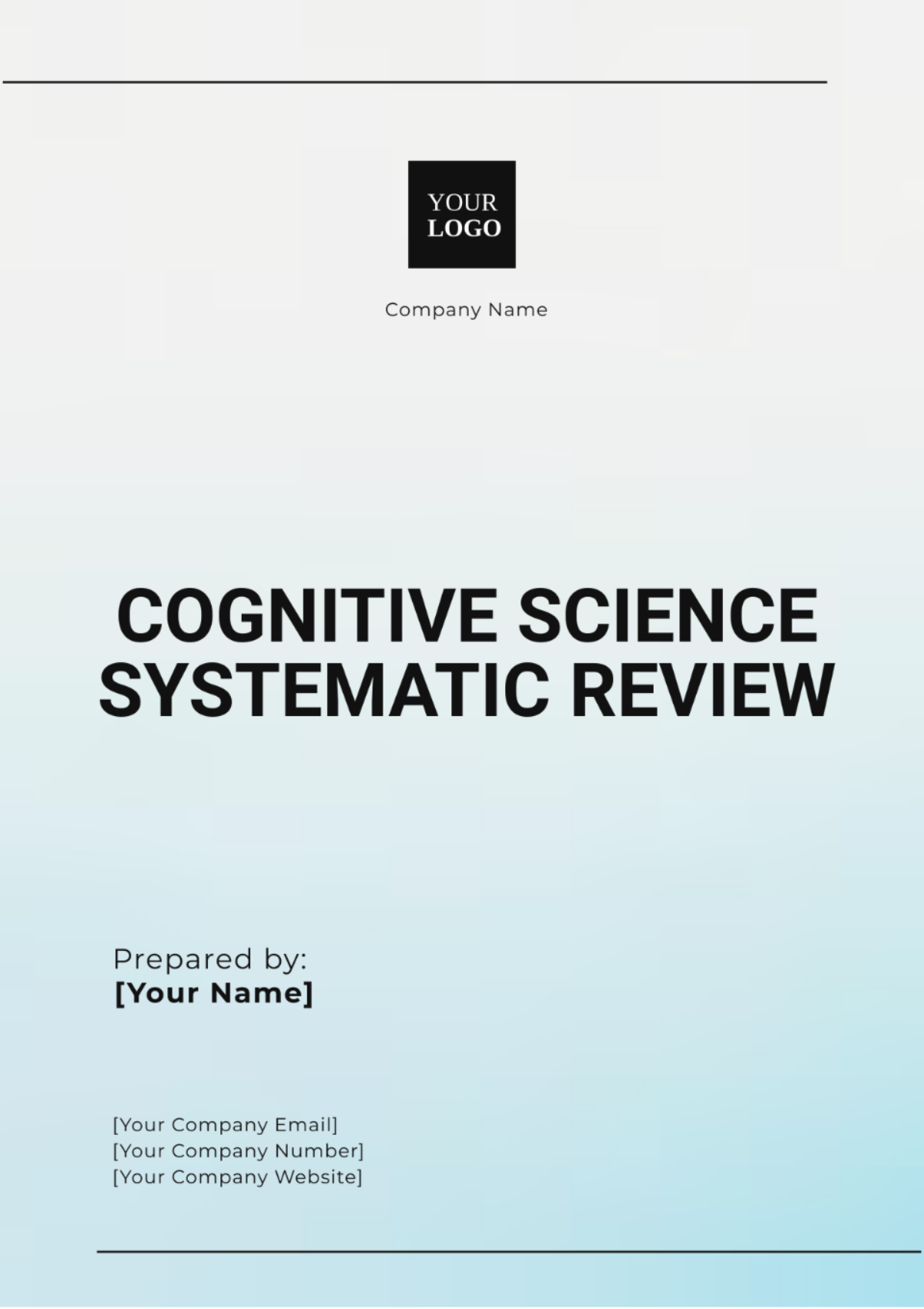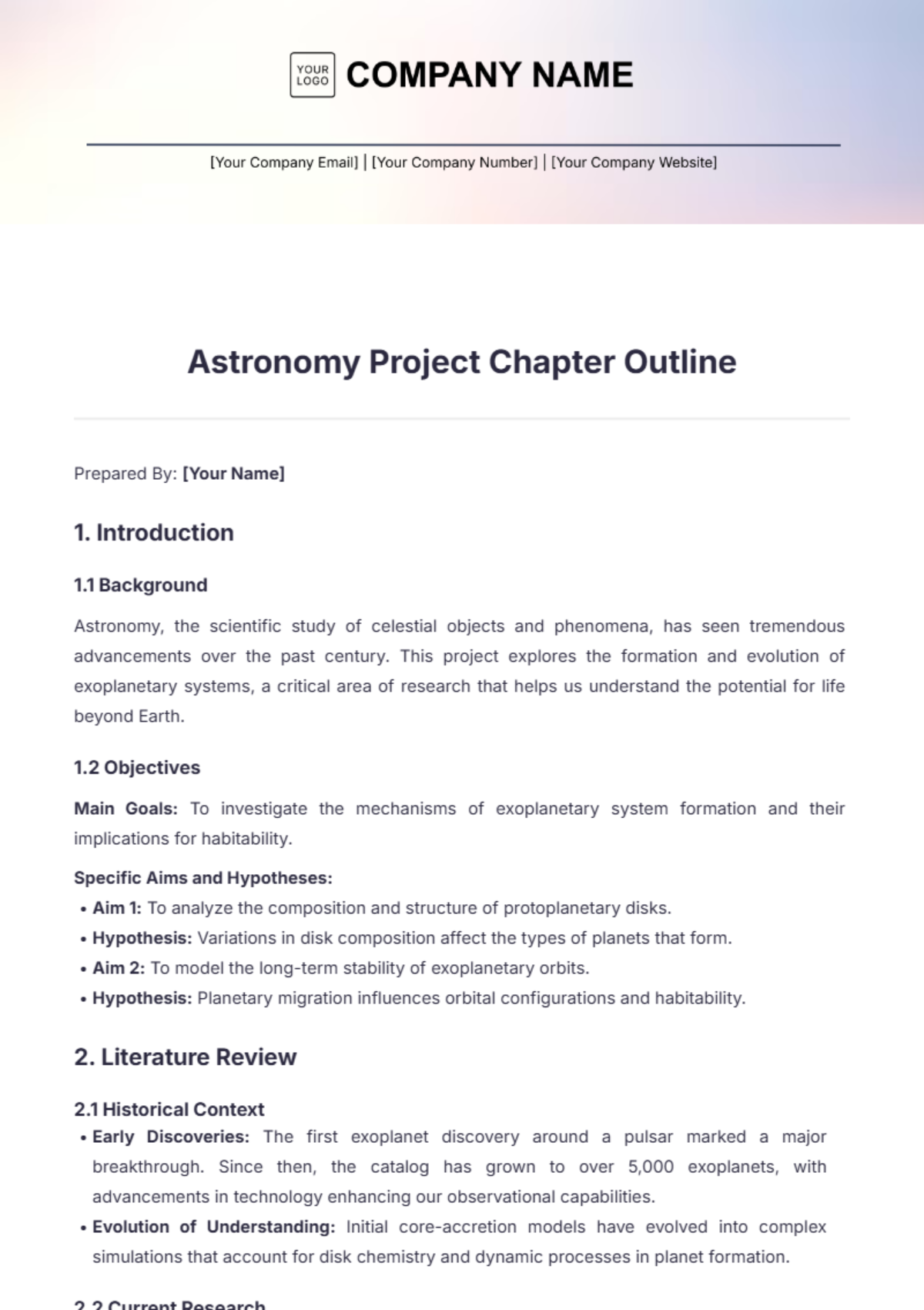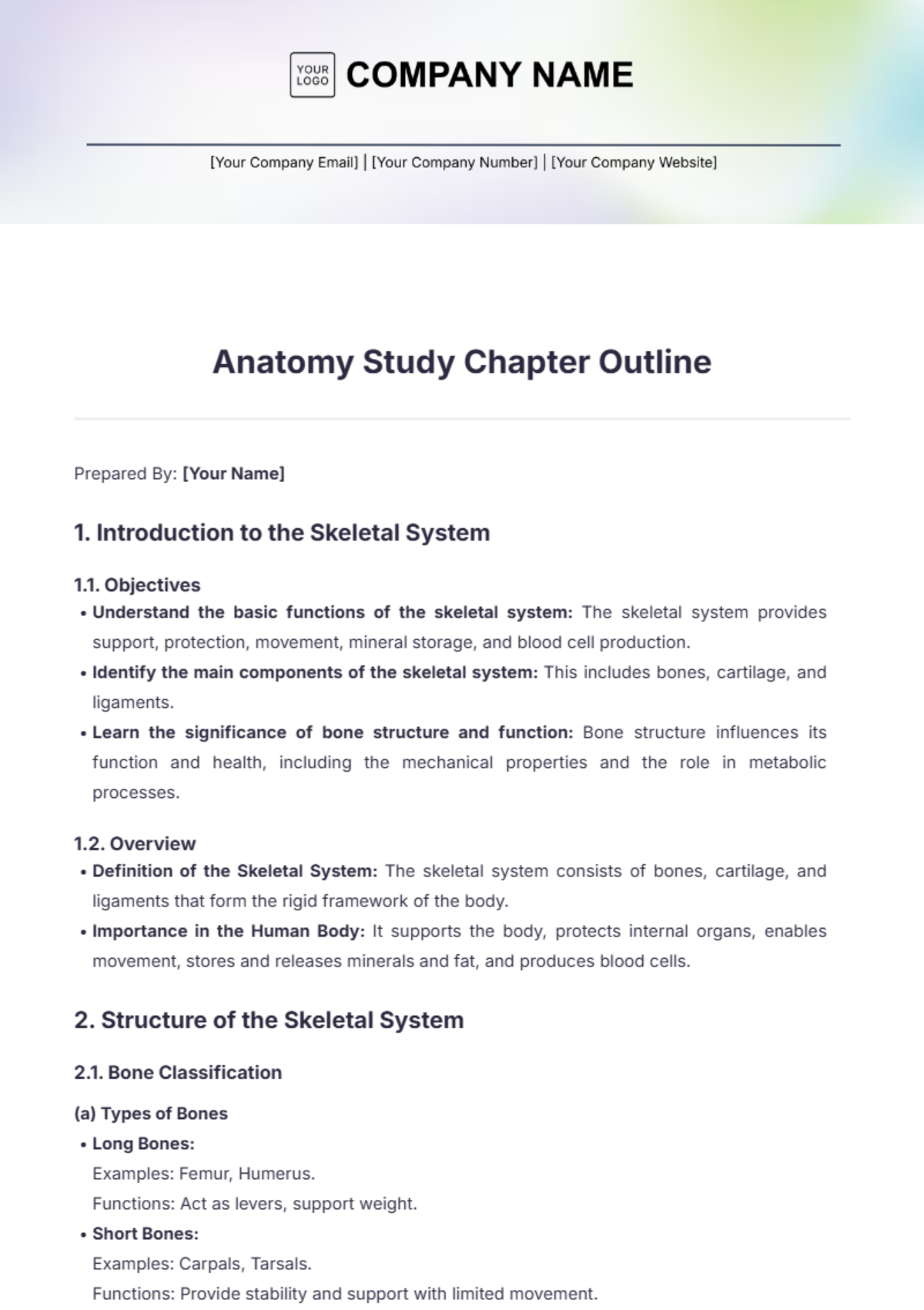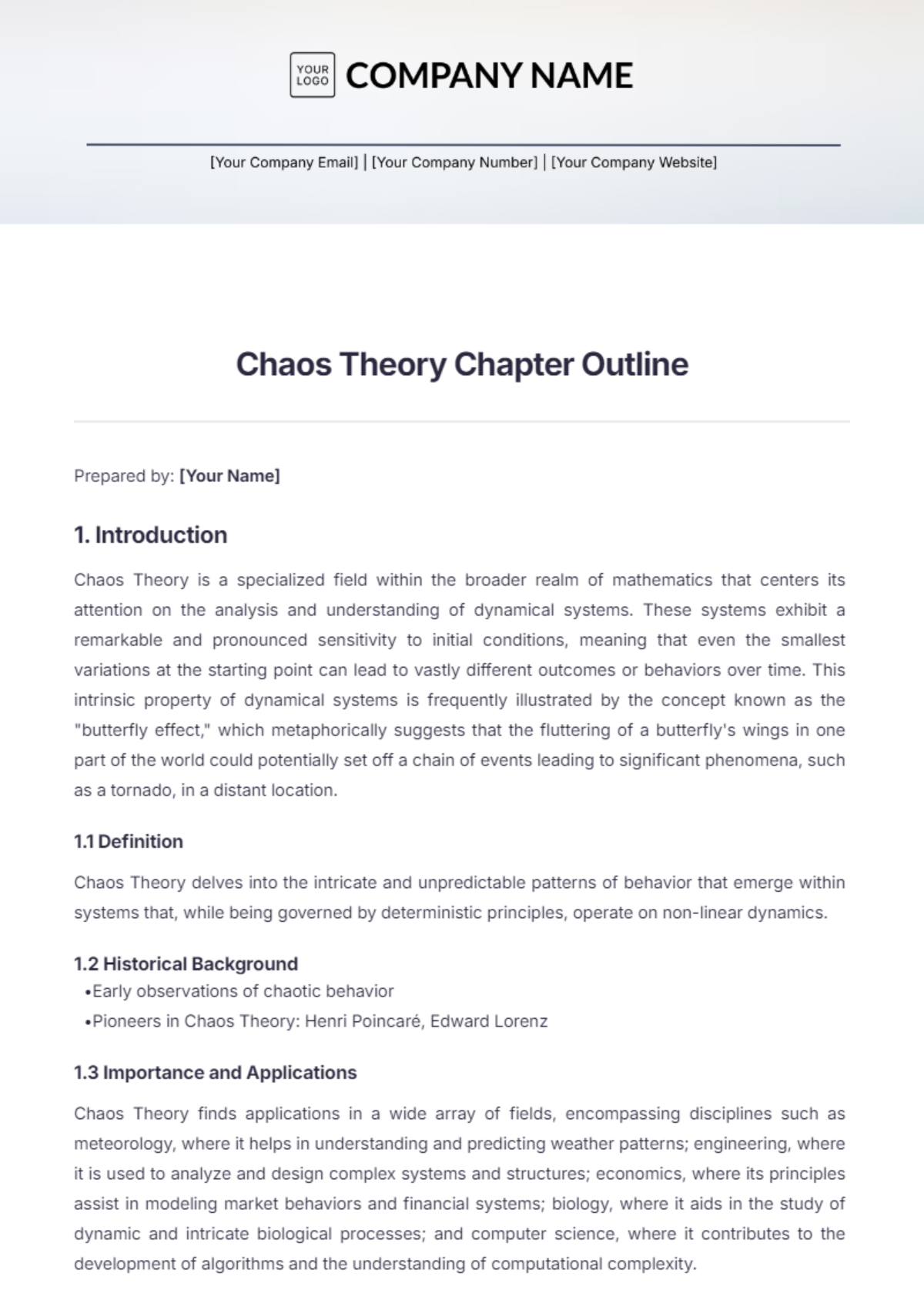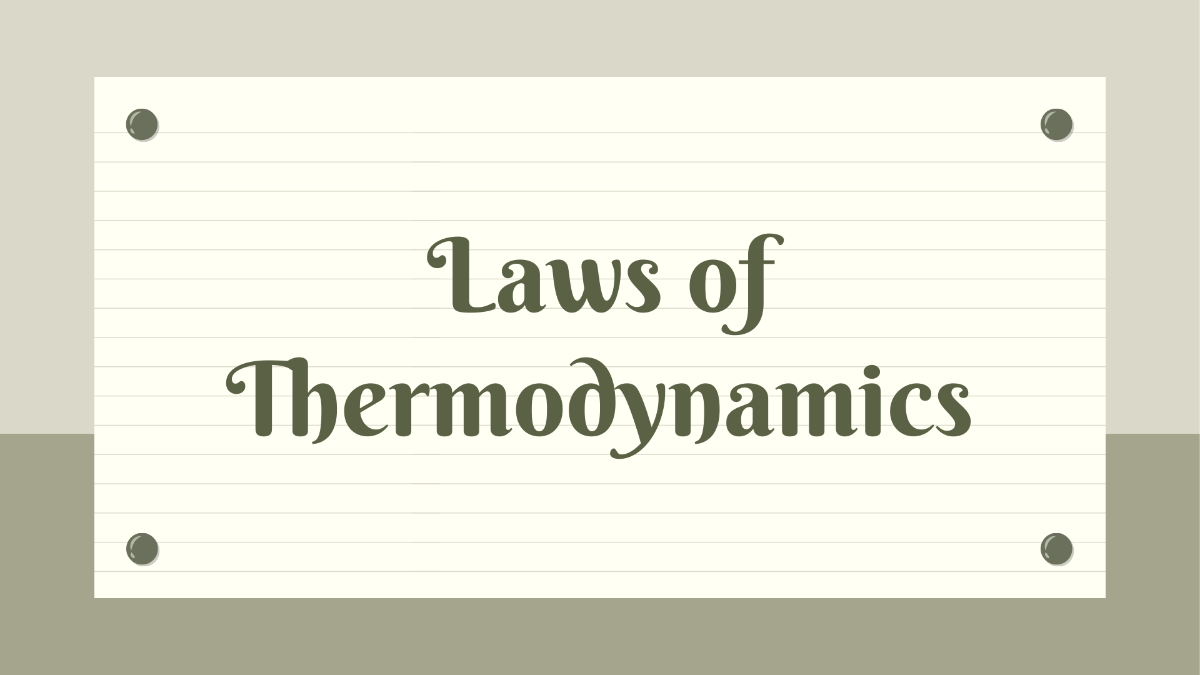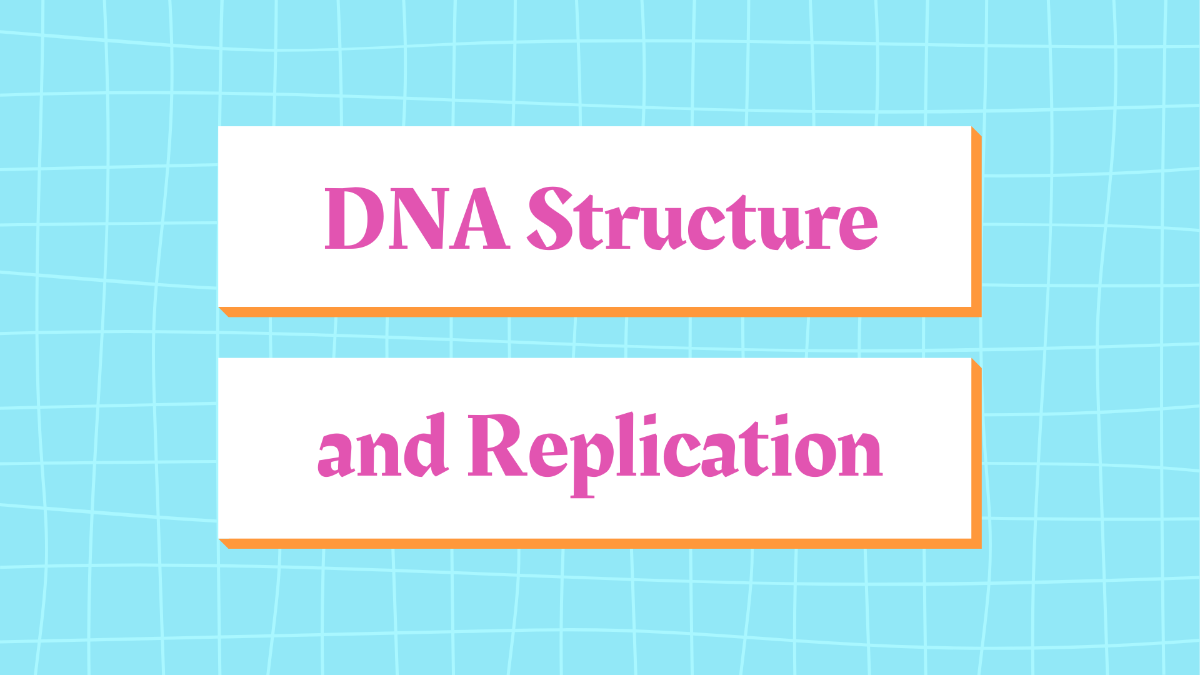Chaos Theory Chapter Outline
Prepared by: [Your Name]
1. Introduction
Chaos Theory is a specialized field within the broader realm of mathematics that centers its attention on the analysis and understanding of dynamical systems. These systems exhibit a remarkable and pronounced sensitivity to initial conditions, meaning that even the smallest variations at the starting point can lead to vastly different outcomes or behaviors over time. This intrinsic property of dynamical systems is frequently illustrated by the concept known as the "butterfly effect," which metaphorically suggests that the fluttering of a butterfly's wings in one part of the world could potentially set off a chain of events leading to significant phenomena, such as a tornado, in a distant location.
1.1 Definition
Chaos Theory delves into the intricate and unpredictable patterns of behavior that emerge within systems that, while being governed by deterministic principles, operate on non-linear dynamics.
1.2 Historical Background
Early observations of chaotic behavior
Pioneers in Chaos Theory: Henri Poincaré, Edward Lorenz
1.3 Importance and Applications
Chaos Theory finds applications in a wide array of fields, encompassing disciplines such as meteorology, where it helps in understanding and predicting weather patterns; engineering, where it is used to analyze and design complex systems and structures; economics, where its principles assist in modeling market behaviors and financial systems; biology, where it aids in the study of dynamic and intricate biological processes; and computer science, where it contributes to the development of algorithms and the understanding of computational complexity.
2. Fundamental Concepts of Chaos Theory
2.1 Deterministic Chaos
Systems that are governed by deterministic laws but exhibit behavior that is difficult or impossible to predict with certainty.
2.2 Sensitivity to Initial Conditions
Minor variations in the initial conditions of a system can lead to significantly divergent results over time. This phenomenon, widely recognized in the study of chaotic systems, is often referred to as the butterfly effect. It illustrates how even the smallest changes at the starting point can have profound and unpredictable impacts on the overall behavior and final state of the system.
2.3 Nonlinearity
A majority of systems characterized by chaotic behavior exhibit non-linear dynamics, meaning that in these systems, the relationship between the input and the output is not one of direct proportionality. Instead, small changes in the input can lead to disproportionately large changes in the output, indicating that the output is not a simple, scalable version of the input.
2.4 Fractals and Self-Similarity
Fractals are complex and detailed geometric structures that exhibit a remarkable characteristic known as self-similarity, meaning that they consistently maintain the same pattern or shape across a wide variety of different scales and magnifications.
2.5 Strange Attractors
An attractor refers to a collection of numerical values that a system increasingly moves towards over time, irrespective of the starting conditions. In the realm of chaotic systems, these unique and often complex sets of numerical values are specifically termed strange attractors.
3. Mathematical Models and Equations
3.1 Logistic Map
The logistic map is a form of polynomial mapping that provides a striking illustration of how intricate and chaotic behavior can emerge from relatively straightforward non-linear dynamical equations.
3.2 Lyapunov Exponents
The Lyapunov exponent serves as a crucial measure for determining the rate at which trajectories that start infinitesimally close to each other in a given dynamical system begin to diverge over time. This exponential rate of separation is a significant indicator used to identify the presence of chaotic behavior within the system. Essentially, a positive Lyapunov exponent suggests that small differences in initial conditions will lead to vastly different outcomes, which is a hallmark of chaos.
3.3 Julia Sets and Mandelbrot Set
Julia Sets: Representations of complex dynamics in the complex plane
Mandelbrot Set: A set of complex numbers visualized to reveal complex structures arising from simple rules
4. Analysis and Visualization Techniques
4.1 Poincaré Maps
A specific kind of graphical representation is employed to illustrate the points where a periodic trajectory intersects with a designated section or plane within the context of a dynamical system.
4.2 Phase Space
A multidimensional space in which every conceivable state that a system can potentially occupy is represented.
4.3 Bifurcation Diagrams
Diagrams that illustrate how the structure of solutions within a system evolves or transforms in response to variations in a specific parameter.
5. Applications of Chaos Theory
5.1 Weather Prediction
Chaos Theory provides insight into the underlying reasons that make the accurate prediction of weather over long periods inherently challenging and complex.
5.2 Engineering and Control Systems
This concept is employed in the process of designing systems that are required to uphold stability and functionality even when confronted with chaotic, unpredictable, or fluctuating inputs.
5.3 Biology and Medicine
Population Dynamics: Understanding oscillations in populations
Cardiology: Analyzing chaotic behavior in the human heart
5.4 Economics and Finance
The application of Chaos Theory to financial markets is utilized as a method to model and understand the intricacies and irregularities inherent in market behavior.
6. Challenges and Limitations
6.1 Predictability and Long-Term Forecasting
The constraints arise from the system's pronounced susceptibility to variations in its initial state.
6.2 Computational Complexity
A substantial amount of computational resources is required for conducting simulation and modeling activities.
6.3 Data Accuracy
In systems that exhibit chaotic behavior, even minute inaccuracies in the measurement of data can result in drastically divergent predictions.
7. Conclusion
Chaos Theory provides deep insights into the complexity and unpredictability of various dynamical systems, offering tools and methodologies for better understanding and potentially controlling chaotic behavior in diverse fields.






